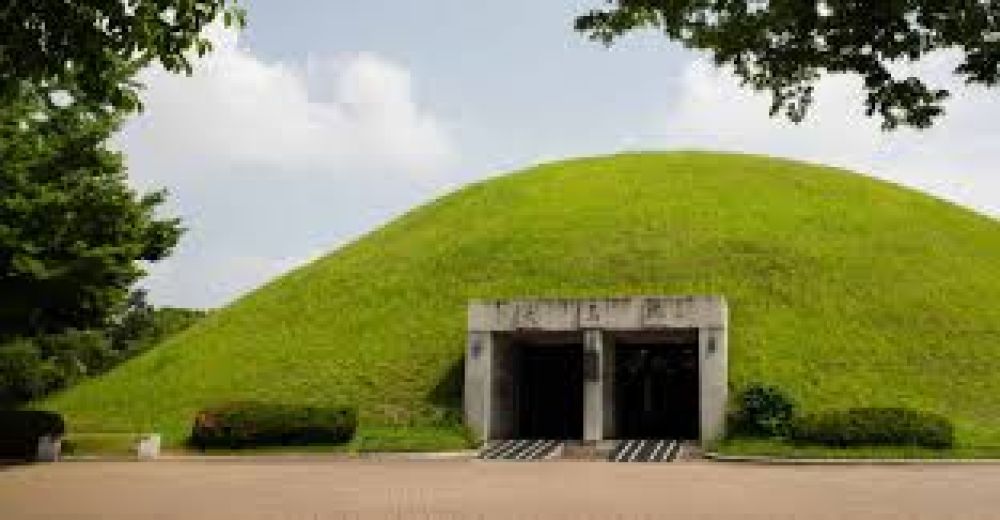

The Tumuli Park in Gyeongju is not only a historical site featuring ancient tombs of the Silla Dynasty but is also near a region rich with a culinary tradition that dates back centuries. Gyeongju, once the capital of the Silla Kingdom, offers a glimpse into the traditional food culture of Korea that was enjoyed by royalty. The royal cuisine here is known to be delicate and refined with an emphasis on presenting a balance of flavors and medicinal benefits, rooted in the philosophies of Confucianism and Buddhism. Over the years, the local cuisine has been preserved and passed down generation to generation, including both vegetarian and non-vegetarian dishes, albeit respecting the Buddhist traditions which often emphasize vegetarianism.
Bibimbap (Non-Veg) - A famous Korean mixed rice dish with vegetables, and sometimes beef and a fried egg.
Gyeongju Bread (Veg) - A small pastry with a filling of red bean paste, a sweet treat enjoyed by locals and tourists.
Kimchi (Veg) - The quintessential Korean side dish made from fermented vegetables, most commonly napa cabbage and Korean radishes, with a variety of seasonings.
Pajeon (Veg/Non-Veg) - A savory pancake filled with green onions and a variety of other ingredients like seafood or kimchi.
Bulgogi (Non-Beef Non-Veg) - Usually made with beef, but for non-beef eaters, variations with chicken or pork marinated in a sweet and savory sauce then grilled or stir-fried.
Japchae (Veg/Non-Veg) - A traditional Korean dish made from sweet potato noodles, stir-fried in sesame oil with vegetables, sometimes served with beef or seafood.
Hwajeon (Veg) - Sweet Korean pancakes often adorned with edible flowers, creating a dish that's almost too pretty to eat.
Sundubu-jjigae (Non-Veg) - A hot and spicy Korean stew made with uncurdled tofu, vegetables, sometimes meats, and gochujang or gochugaru.
Hotteok (Veg) - A type of filled Korean pancake, typically sweet, with a brown sugar and nut filling.
Namul (Veg) - A term for a variety of seasoned vegetable dishes that can be served as banchan, or side dishes.
Address: 16 Taejong-ro 699beon-gil, Gyeongju, Gyeongsangbuk-do, South Korea
Famous for its Gyeongju Bread (Veg), a local specialty and must-try for visitors.
Address: 9 Hwangnam-dong, Gyeongju, Gyeongsangbuk-do, South Korea
Offering traditional Hanjeongsik (Veg/Non-Veg) meals, an elaborate Korean full-course meal with a variety of side dishes.
Address: Located near Tumuli Park
Here you can find a range of Korean street food, including vegetarian options like Hotteok (Veg) and Tteokbokki (Veg/Non-Veg), spicy rice cakes.
Exploring the food landscape around Tumuli Park in Gyeongju offers both an educational and delicious experience that reflects the deep history and cultural heritage of the region.